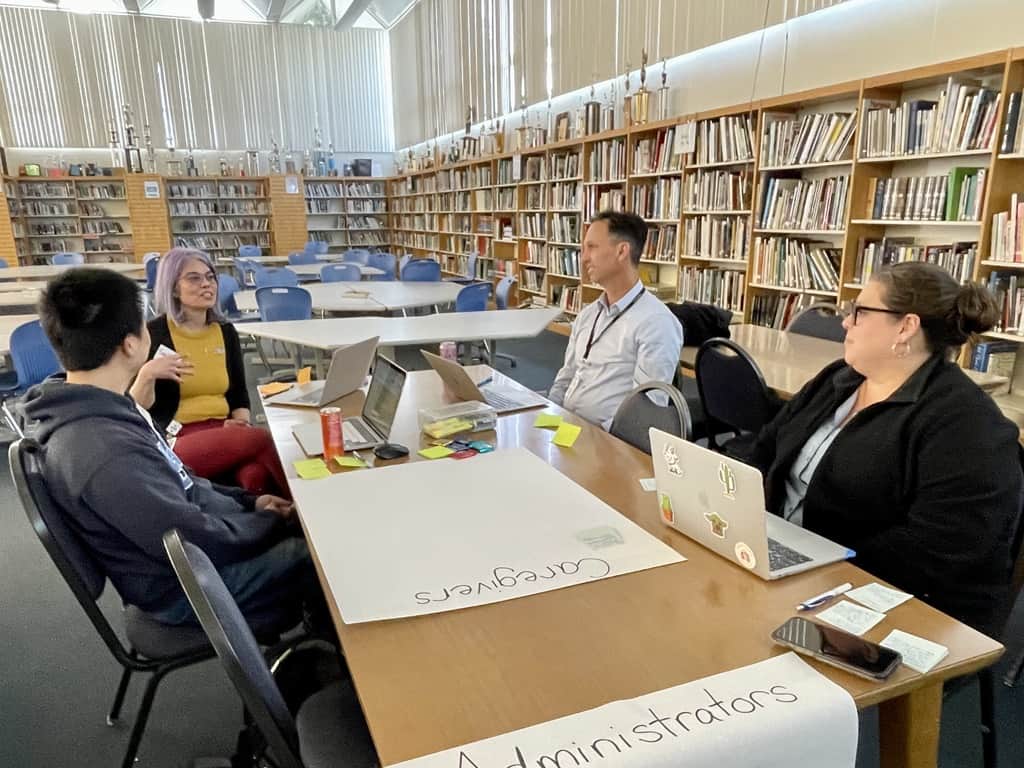Ensuring family access and understanding in the classroom
My child can’t read yet, Mrs. Armstrong! Is my daughter already behind? We just started kindergarten!
How many times have we as teachers been asked this question: “Is my child behind?” Well, behind what, exactly? Behind whom?
I remember being asked this question by a very concerned and anxious parent at the start of the 2021–22 school year. This parent, like many others, had kept their child home from preschool due to the pandemic. This child was about to start kindergarten having had no prior exposure to “traditional schooling”; her mother hadn’t attended school in this area, state, nor decade and was truly concerned about her daughter being at a disadvantage. What a disheartening mindset with which to begin a lifelong academic journey and partnership! I also remember thinking that if this parent has this concern, there must be others.
Think back to when you were a first-year teacher, or even when you were student teaching for the first time. What did you know about being in a classroom? I’m betting a lot of it came from your own experiences as a learner; I know mine did. I had vivid memories of clip charts, “blue bird” and “robin” reading groups, Mad Minute math tests, and spelling lists to be repeated three times each. Now, think about where you are currently as a teacher. Do you engage with your students the same way? Most likely not! We know our best practices, but our families only know their own experiences—both good and bad.
How can we as educators pull back the proverbial curtain?
1. Think about how you’re sharing your curriculum with families.
Most of our curriculum is written for teachers, and even then, we get training and time to delve into it before we begin teaching. Is the language teacher jargon or in layman’s terms? For example, after looking at our demographic data and soliciting feedback from our families, it became clear to my team that many of the families had no concept of what school actually looked like at the K-2 level. I reached out to admin and secured funding for some curriculum writing time with some wonderful colleagues to create a guide for families (Access here: Primary Literacy Guide) that breaks down what literacy learning “looks like.” This led to the creation of the district Primary Literacy Guide site, which breaks down literacy learning for families and is available in many languages as well as featuring on-screen Braille.
2. Consider sharing your rubrics or benchmarks. What definitions will families need to know to be able to understand what their child is learning and help them succeed?
When I was a classroom teacher, at the beginning of every major unit I would share a checklist of learning targets, important Tier 3 vocabulary, and the rubric I would use to determine if proficiency was achieved. It’s kind of like when professors share a syllabus at the beginning of a semester. This allows students and caregivers to know and understand expectations, and there are no surprises at the end. We know the difference between phonics and phonemic awareness or between the Cartesian Plane and graphs. Do all of our families? This information can be included in your Family Newsletters or other communications home: “Our next unit in Math will be ‘insert topic here.’ We will learn concepts like: ‘x,’ ‘y,’ and ‘z.’”
3. Make sure materials are being shared equitably.
Keep in mind that there are different levels and different literacies prevalent in your community. Google Translate is a wonderful tool that can help transcribe text, speech, and handwritten materials. Though it does not take the place of in-person translating, it can be very helpful when communicating across languages. See if your school district can subscribe to The Language Line; this is access to over 200 live, on-demand interpreters. There are also screen readers available through Chrome, Apple, and Windows free of charge that will read aloud any on-screen text in any chosen language.
I think it’s important to remind ourselves that many of us live and breathe school. We are masters of not only academic curricula but also social-emotional learning. We know grade-level expectations, the benchmarks, the proficiency scales, and when to start interventions. Our families are craftspeople, business leaders, stay-at-home parents, grandparents, siblings, and more. They may not have a current model to rely on when it comes to what a kindergarten or elementary school classroom looks like. We know our families are coming from different backgrounds and economic statuses, and they are in different places in healing their own traumas. Remember that families are our students’ first teachers; they must be respected and valued in all ways. They are contributors and collaborators. But, to contribute and collaborate, they must first be given access to the door.





